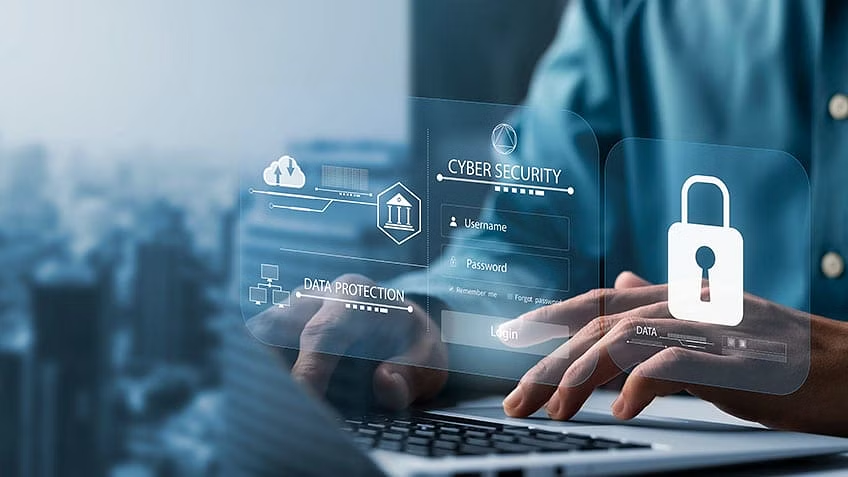Introduction to Cybersecurity
Cybersecurity is the practice of protecting systems, networks, and programs from digital attacks. These attacks are typically aimed at accessing, changing, or destroying sensitive information, extorting money from users, or interrupting normal business processes. As technology advances, so do the threats, making cybersecurity a critical field for safeguarding data integrity and system functionality.
Daily Responsibilities of Cybersecurity Professionals
Cybersecurity professionals have diverse roles and responsibilities, which can vary widely depending on their job titles, the organizations they work for, and the specific industries they are in. Here’s an in-depth look at what these professionals do daily:
1. Monitoring and Analyzing Networks
1.1. Intrusion Detection:
- Use of Intrusion Detection Systems (IDS) and Intrusion Prevention Systems (IPS):
- Cybersecurity professionals utilize IDS and IPS tools to monitor network traffic for suspicious activities. IDS tools alert on potential intrusions, while IPS tools can block detected threats in real time.
- These systems analyze data packets traversing the network and match them against known attack signatures to identify malicious activities.
- Analyzing Logs and Reports:
- Continuous monitoring involves analyzing logs generated by firewalls, IDS/IPS, servers, and other network devices. These logs provide insights into network activities and help identify unusual patterns that may indicate a security breach.
- Professionals use Security Information and Event Management (SIEM) systems to aggregate and analyze logs from various sources, enabling real-time threat detection and response.
1.2. Network Traffic Analysis:
- Continuous Analysis:
- Cybersecurity teams continuously analyze network traffic to detect anomalies. Anomalies could include unusual traffic patterns, unexpected data transfers, or communications with known malicious IP addresses.
- Tools like Wireshark and Splunk are used to capture and analyze traffic, helping professionals to drill down into specific packets and understand the nature of the traffic.
2. Incident Response
2.1. Identifying and Assessing Threats:
- Quick Identification:
- Rapidly identifying and assessing the severity of security incidents is crucial. This involves recognizing indicators of compromise (IoCs) such as unusual logins, changes in file integrity, or malware alerts.
- The assessment helps determine the potential impact of the threat and the urgency of the response required.
2.2. Containment and Mitigation:
- Immediate Actions:
- Upon identifying a threat, cybersecurity professionals take immediate steps to contain it and prevent further damage. This may involve isolating affected systems, blocking malicious IP addresses, or disabling compromised accounts.
- Mitigation strategies are implemented to address vulnerabilities and stop the attack from spreading. This includes applying patches, updating security configurations, or deploying additional security controls.
2.3. Root Cause Analysis:
- Thorough Investigation:
- Conducting a thorough root cause analysis is essential to understand how the incident occurred and to prevent future occurrences. This involves tracing the attack vector, identifying exploited vulnerabilities, and analyzing attack methods.
- Findings from the investigation are documented, and recommendations for preventive measures are made, such as implementing additional security controls or modifying existing policies.
3. Security Assessments and Audits
3.1. Vulnerability Scanning:
- Regular Scanning:
- Regularly scanning systems and networks for vulnerabilities is a proactive measure to identify and address security weaknesses before they can be exploited by attackers.
- Tools like Nessus, OpenVAS, and Qualys are used to perform automated scans, generating reports that highlight vulnerabilities and provide remediation steps.
3.2. Penetration Testing:
- Simulated Attacks:
- Penetration testing involves conducting simulated attacks on systems to identify weaknesses. Ethical hackers use tools and techniques similar to those employed by malicious hackers to test defenses.
- The goal is to uncover security gaps and provide actionable insights for improving security posture. Penetration testing reports include detailed findings and recommendations for remediation.
3.3. Compliance Audits:
- Ensuring Compliance:
- Cybersecurity professionals conduct regular audits to ensure that the organization complies with relevant laws, regulations, and industry standards, such as GDPR, HIPAA, or PCI-DSS.
- Compliance audits involve reviewing policies, procedures, and technical controls to verify adherence to regulatory requirements and identifying areas for improvement.
4. Implementing Security Measures
4.1. Firewalls and Intrusion Prevention Systems:
- Configuration and Management:
- Cybersecurity teams configure and manage firewalls to control incoming and outgoing network traffic based on predetermined security rules. Firewalls serve as a barrier between trusted and untrusted networks.
- Ensuring that IPS systems are up-to-date with the latest threat signatures is crucial for blocking known threats effectively.
4.2. Endpoint Protection:
- Deploying Security Solutions:
- Deploying and managing antivirus, anti-malware, and endpoint detection and response (EDR) solutions on all endpoints (e.g., computers, servers, mobile devices) is essential for protecting against a wide range of threats.
- Continuous monitoring of endpoints helps detect signs of infection or compromise, allowing for timely remediation.
4.3. Encryption and Data Protection:
- Implementing Encryption:
- Implementing encryption technologies to protect sensitive data is a key security measure. Encryption ensures that data is unreadable to unauthorized users both at rest (stored data) and in transit (data being transmitted over networks).
- Effective encryption strategies include using strong encryption algorithms and managing encryption keys securely.
5. Security Awareness Training
5.1. Employee Training Programs:
- Developing Training Sessions:
- Developing and conducting training sessions to educate employees about cybersecurity best practices is vital for building a security-aware culture. Training topics may include password management, phishing awareness, and safe browsing practices.
- Regular training sessions help employees recognize and respond to potential threats, reducing the risk of successful attacks.
5.2. Policy Development:
- Creating and Enforcing Policies:
- Creating comprehensive security policies and procedures is essential for establishing security standards and guidelines. Policies should cover areas such as acceptable use, data protection, incident response, and access control.
- Ensuring that all employees understand and adhere to these policies helps maintain a consistent and effective security posture.
6. Threat Intelligence and Research
6.1. Threat Monitoring:
- Staying Updated:
- Staying updated with the latest threat intelligence reports and bulletins is crucial for proactive threat management. This involves monitoring threat actor activities, emerging threats, and trends relevant to the organization.
- Sources of threat intelligence include government agencies, cybersecurity vendors, industry groups, and threat intelligence platforms.
6.2. Security Research:
- Conducting Research:
- Researching new vulnerabilities, attack vectors, and security technologies helps cybersecurity professionals stay ahead of potential threats. This involves analyzing new exploits, studying attacker techniques, and testing new security tools.
- Sharing research findings with the broader security community through publications, presentations, and collaborations enhances collective knowledge and defenses.
Skills and Qualifications Needed for a Cybersecurity Professional
To become a cybersecurity professional, one needs a combination of education, skills, and certifications. Here are the key components:
1. Educational Background:
1.1. Degrees:
- Bachelor’s Degree:
- A bachelor’s degree in computer science, information technology, cybersecurity, or a related field is often required for entry-level positions. These programs provide foundational knowledge in networking, programming, and security principles.
- Advanced Degrees:
- Advanced degrees (master’s or Ph.D.) can be beneficial for specialized roles or leadership positions. These programs offer in-depth knowledge and research opportunities in areas such as cryptography, information assurance, and cybersecurity policy.
1.2. Relevant Courses:
- Coursework:
- Relevant courses include networking, systems architecture, operating systems, cybersecurity principles, cryptography, and ethical hacking. These courses provide essential knowledge and skills for cybersecurity roles.
2. Technical Skills:
2.1. Networking:
- Understanding Network Protocols:
- A solid understanding of network protocols, architecture, and services is crucial. Cybersecurity professionals need to know how networks operate, including TCP/IP, DNS, and HTTP protocols.
- Configuring Network Devices:
- Proficiency in configuring and managing network devices such as routers, switches, and firewalls is essential for securing network infrastructure.
2.2. Operating Systems:
- Knowledge of Operating Systems:
- Knowledge of various operating systems, including Windows, Linux, and macOS, is necessary. Cybersecurity professionals need to understand how these systems function and how to secure them.
- System Hardening:
- The ability to secure and harden operating systems by configuring security settings, applying patches, and implementing security controls is critical for preventing attacks.
2.3. Programming and Scripting:
- Programming Languages:
- Skills in programming languages like Python, Java, and C++ are valuable for developing security tools, automating tasks, and analyzing malicious code.
- Scripting Languages:
- Scripting skills in languages like Bash and PowerShell are useful for automating system administration tasks, writing custom scripts for security analysis, and managing configurations.
2.4. Security Tools and Technologies:
- Familiarity with Security Tools:
- Familiarity with a range of security tools such as firewalls, IDS/IPS, SIEM systems, and endpoint protection solutions is essential for detecting and responding to threats.
- Hands-on Experience:
- Practical experience with these tools through labs, internships, or previous work experience helps in understanding their capabilities and limitations.
3. Soft Skills:
3.1. Problem-Solving:
- Analytical Thinking:
- Cybersecurity professionals need strong analytical thinking skills to assess complex security issues, identify patterns, and develop effective solutions. This involves breaking down problems into manageable parts and systematically addressing each component.
- Creativity:
- Creativity is also important for developing innovative approaches to security challenges. Attackers are constantly evolving their methods, so defenders must be equally adaptable and inventive in their strategies.
3.2. Communication:
- Verbal Communication:
- Effective verbal communication skills are essential for explaining technical concepts to non-technical stakeholders, including executives, employees, and clients. Clear communication helps ensure that everyone understands the importance of security measures and their role in maintaining them.
- Written Communication:
- Strong written communication skills are necessary for documenting security policies, procedures, incident reports, and research findings. Well-written documentation provides a reference for future actions and ensures consistency in security practices.
3.3. Teamwork:
- Collaboration:
- Cybersecurity often requires collaboration with other IT departments, business units, and external partners. Professionals must work effectively in a team environment, sharing information and coordinating efforts to protect the organization.
- Conflict Resolution:
- The ability to resolve conflicts and negotiate solutions is also important, as security initiatives can sometimes conflict with other business priorities. Finding a balance between security and operational efficiency requires strong interpersonal skills.
4. Certifications:
4.1. Entry-Level Certifications:
- CompTIA Security+:
- This certification covers fundamental security concepts, including network security, compliance, threats, and vulnerabilities. It is a good starting point for those new to cybersecurity.
- Certified Ethical Hacker (CEH):
- The CEH certification focuses on the techniques and tools used by hackers and how to counteract them. It is suitable for professionals interested in penetration testing and ethical hacking.
- GIAC Security Essentials (GSEC):
- The GSEC certification validates practical skills in security, including access control, cryptography, and incident handling. It is aimed at professionals with some experience in cybersecurity.
4.2. Advanced Certifications:
- Certified Information Systems Security Professional (CISSP):
- The CISSP certification is globally recognized and covers a broad range of security topics, including risk management, asset security, and security engineering. It is intended for experienced security professionals and is often required for senior roles.
- Certified Information Security Manager (CISM):
- The CISM certification focuses on managing and governing an organization’s information security program. It is suitable for professionals in management roles who oversee security policies and practices.
- Certified Information Systems Auditor (CISA):
- The CISA certification is designed for auditors who assess and control an organization’s IT and business systems. It covers auditing processes, governance, and risk management.
Daily Routine of Cybersecurity Professionals
A typical day for a cybersecurity professional might involve several activities, each critical to maintaining the security posture of the organization. Here’s a detailed look at a daily routine:
Morning Tasks:
1. Reviewing Alerts and Incidents:
- Start the day by reviewing alerts and incidents from the previous night. This involves checking SIEM dashboards, IDS/IPS logs, and other monitoring tools for any signs of suspicious activity.
- Prioritize incidents based on severity and potential impact, and initiate investigations as needed.
2. Team Briefing:
- Participate in a daily team briefing to discuss the current security status, ongoing investigations, and any new threats or vulnerabilities. This ensures that everyone is on the same page and aware of their tasks for the day.
Midday Activities:
3. Incident Response:
- Respond to active incidents by following the organization’s incident response plan. This may involve isolating affected systems, analyzing malware samples, and communicating with affected users.
- Document actions taken during the response and update incident records.
4. Vulnerability Management:
- Conduct vulnerability scans on critical systems and applications. Review scan results to identify new vulnerabilities and prioritize them for remediation.
- Work with IT teams to apply patches and updates, and verify that vulnerabilities are effectively mitigated.
Afternoon Tasks:
5. Security Assessments:
- Perform regular security assessments, such as penetration testing or social engineering exercises, to identify weaknesses in the organization’s defenses.
- Compile assessment results into detailed reports and present findings to management, along with recommendations for improvement.
6. Security Awareness Training:
- Conduct training sessions for employees on security best practices. Use real-world examples and interactive activities to engage participants and reinforce learning.
- Distribute educational materials, such as newsletters and bulletins, to keep security awareness top of mind.
End-of-Day Wrap-Up:
7. Reviewing Threat Intelligence:
- Review the latest threat intelligence reports and bulletins from various sources. Update threat profiles and security controls based on new information.
- Share relevant intelligence with the team and other stakeholders to ensure everyone is aware of emerging threats.
8. Planning and Reporting:
- Plan tasks for the next day, including any follow-up actions from incidents, ongoing assessments, and upcoming projects.
- Prepare and submit daily or weekly reports summarizing security activities, incidents handled, and any notable findings.






